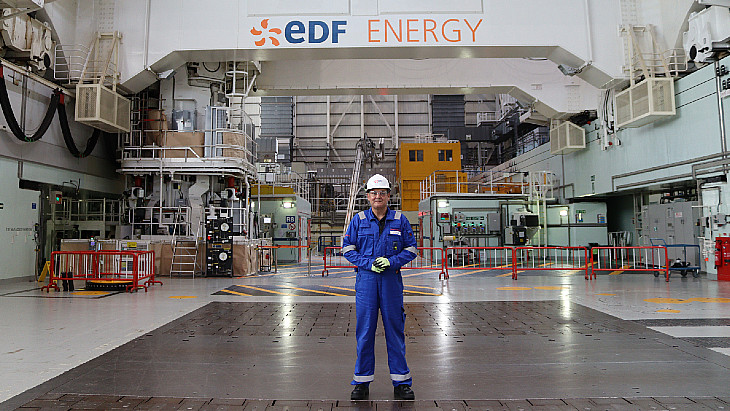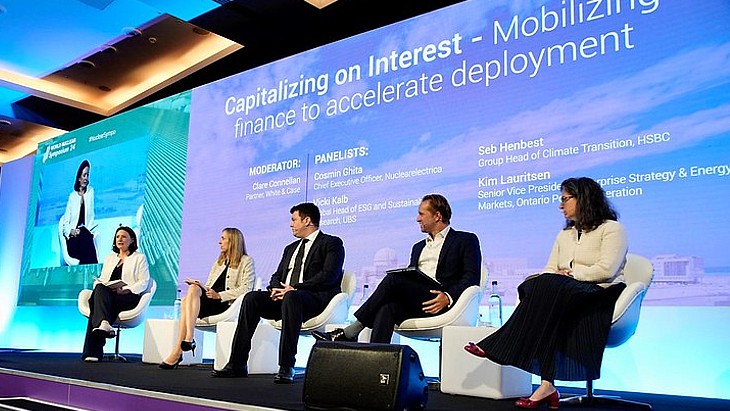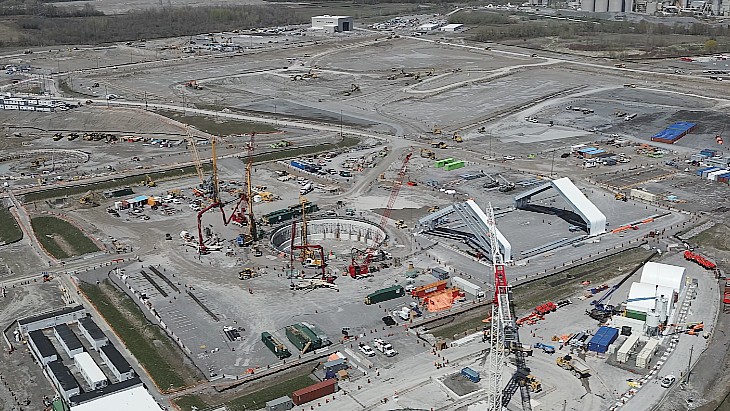Viewpoint: How oil & gas majors could turn the tide against global warming

Specifically, might technology development in the small modular reactor and advance reactor (SM&AR) space be a unique opportunity at a critical moment in time for OGMs? OGMs are awakening to the strategic, reputational, and workforce retention challenges they face if they do not take significant steps to address climate change due to the impact of fossil fuels on the environment. A decade after its Barakah bid, Total has been the target of a ground-breaking lawsuit for allegedly failing to adequately fight climate change - just one example of how activist shareholders are demanding meaningful action by OGMs.
Equinor has chosen to address carbon intensity, BP has incorporated a 'net-zero' policy plan and ExxonMobil has worked to develop alternative fuels. Using a technology-driven reconfiguration of asset portfolios, these OGMs are endeavouring to increase clean energy elements while reducing fossil fuel operations. By listening to their shareholders and to the public debate, changes are being made.
With the role of nuclear power clearly identified as essential in the effort to address climate change, the underlying challenge for increasing nuclear power is how to secure investment. Two key financing problems exist.
First, significant scholarship has been devoted to the idea that financing a nuclear power plant, especially the massive upfront costs, is one of the greatest challenges of its deployment. The amount of investment required in nuclear power plants to help with a clean growth strategy or a zero-carbon electricity sector is often perceived to be prohibitive. The 80% increase noted by the International Energy Agency in a report last year amounts to about 220 GW, assuming that existing nuclear power does not fade. Placing more than 200 GW of new nuclear capacity into operation will require hundreds of new large nuclear power projects, as well as an even greater number of smaller nuclear reactors.
Even if governments provide some support for new nuclear projects (e.g. revenue enhancements, reductions in development cost and completion risk), the amount of investment is enormous, even in a non-pandemic or post-pandemic environment, where government budgets and corporate balance sheets are under immense stress (and further exacerbated by the current economic downturn).
For perspective, OGMs had more than USD80 billion in earnings in 2018, more than twice the equity required for new nuclear investments in a year. Investment required for 200 GW of new nuclear will be at least USD1 trillion (with a capital cost of USD5000/kW). Regulated nuclear might have up to 50% of the capital cost provided by debt, but nuclear plants within deregulated electricity markets may only get 20% to 25% of capital from debt, depending on the project’s economics. This means that USD500-750 billion in equity (or about USD37.5 billion per year) will be required for this 200 GW of new nuclear power projects over 20 years.
Second, one of the biggest hurdles to the development and deployment of SM&ARs is the front-end funding required to bring them to market. NuScale Power is likely to have spent more than USD1 billion by the time it receives its design certification from the US Nuclear Regulatory Commission. While NuScale Power is backed by Fluor, a global engineering and construction company, most SM&AR developers are not large, multi-disciplinary companies with significant financial resources/balance sheets and the requisite global reach for international deployments, except for those that are state-sponsored in certain countries.
As such, SM&AR start-ups lack the financial wherewithal and project development experience to bring their technologies to market (to include the 'economies of multiples' benefit of factory-based assembly) and to achieve international deployments at the levels that will be needed to support a volume business. Notably, both the USA and the UK have engaged in cooperative funding approaches, with NuScale Power and Rolls-Royce respectively receiving funding from the US Department of Energy and UK Research and Innovation.
Bringing SM&ARs to market is not simply a question of the quantum of money needed; they are beset with a unique set of investor challenges. Nuclear power plant investments have long technological development, licensing, and project development and construction periods (albeit shorter in the case of SM&ARs). This time horizon is not practical for a classic equity investor, or for very liquid financing sources such as private equity groups who are less tolerant of taking front-end risks. Instead, what is needed is an investor that is willing to play the 'long game' and is not averse to providing seed capital for new technologies, particularly in areas outside of their traditional areas of technological expertise.
So, who can play the long game? Governments are one obvious choice, and the USA and UK are rolling out various support options for developing SM&ARs. Certain industrials could be another (see Fluor above). But consider:
- What group is under a withering attack by climate change activists?
- What group could make a huge difference in a sector with amounts of money that represent 'pocket change' for this group?
- What group can play the long game, as it looks to transition from a traditional sector that has been fundamental to modern, industrial society, but must now figure out a way to support that same society which is now looking to refashion energy and electricity in a fundamental way to combat possibly the greatest challenge to human development and well-being over the long term?
- What group operates on a global basis and has experience developing complex projects, involving innovative technologies, and doing so often in challenging geographic environments?
OGMs would not only be well-suited to take up this charge from an investment and operations standpoint, but doing so would also be mutually beneficial to counter their perceived (and sometimes actual) climate change insouciance.
If the OGMs are serious about climate change and the diversification of their portfolios that is required to transform themselves into true energy companies that have a significant business component focused on looking to offset their fossil fuel activities, then investment in SM&ARs can have a game-changing effect on the development of such technologies. The transformational impact of such a concerted decision would influence the energy industry writ large and would help to make nuclear power more accessible to, among others, the developing world. It would create innovative applications that could have further transformational effects, to include hydrogen production applications, cogeneration and desalination.
Energy transformation and decarbonisation take time. For better or for worse, fossil fuel activities will still be a core component of modern living for the foreseeable future, which underscores the importance of - and immediacy of - the portfolio balancing activities of OGMs as a key contributing pathway to a sustainable future. Instead of small gestures and R&D efforts to appease environmental activists, OGMs have an opportunity to take meaningful steps by supporting the development of SM&ARs. These R&D efforts will not only improve OGMs’ reputational posture, but will actually facilitate the achievement of goals being championed by environmental groups. Interested OGMs could also consider pooling their efforts to financially support development of one or two of the more advanced SM&AR technologies to even greater effect.
Considering the impact of the pandemic on oil prices and the curtailment of new investment by OGMs, a move into nuclear technology would be a major one at a time when they are under siege. Yet, it is in times of economic and corporate crisis that strategies do need to be rethought and portfolios do need to be reassessed, and that is already occurring within some OGMs, like BP.
The OGMs might need an additional push. If national governments clearly articulate the place for nuclear power as part of a clean growth strategy, and then take the requisite steps to establish clear pathways for the technology and its economic viability, a convergence of interests can be created which could mobilise corporate capital that would, in turn, catapult the development and deployment of SM&ARs.
OGMs have the potential to be ground-breaking leaders in bringing disruptive innovation to clean energy generation. Two years ago, Eni and Commonwealth Fusion Systems (CFS) - a spin-out of the Massachusetts Institute of Technology - signed an agreement that will allow Eni to acquire an equity stake in CFS. Eni will support CFS to develop the first commercial power plant producing energy by fusion. This involves a EUR50 million initial investment by Eni and there has been further investment from, among others, Equinor in May 2020 - in the midst of the pandemic.
The hope is that more strategic partnerships like this will occur. Perhaps now a meaningful dialogue could be opened among OGMs, SM&AR developers, the nuclear industry, and interested governments and international organisations.
Amjad Ghori, Melissa Hersh, Edward Kee and Paul Murphy of Nuclear Economics Consulting Group and Xavier Rollat of Alet Business Services Limited.
The full version of this article can be found at www.nuclear-economics.com









